Our undergraduate students participate in a rigorous design-and-build aerospace project. These projects provide focused mentoring, interdisciplinary teamwork, communication practice, and deep understanding of regulatory requirements, fiscal management, ethical considerations and market awareness.
Capstone options
We offer a variety of project opportunities within the industry, student organizations and in-house research. Students also have the option to propose their own projects. Our portfolio of past projects includes applications extending to search and rescue, wildlife conservation, critical deliveries, and environmental protection among others.
Large team projects must accommodate both domestic and international students, so the selected topics must not involve any constraints related to export-controlled material. Some projects may require US citizenship and/or NDA constraints.
2024-2025 projects
Industry-sponsored
- AeroTEC – Low-Cost Wind Tunnel Testing
Developing low-cost wind tunnel models that can be quickly manufactured and tested to help make aircraft testing more efficient and accessible. - AeroTEC Phase III – Flight Test Vehicle Development
Refining a student-built flight test vehicle by improving its safety systems, telemetry, and performance monitoring to better prepare for real-world testing. - Boeing SSA – Space Debris Tracking Constellation
Designing a network of small satellites to track space debris and help protect future space missions. - LMCO – Lunar Electromotive Launcher
Designing an electromotive launch system to send cargo across the Moon using electric power instead of traditional rockets to supports future lunar infrastructure and resource transport. - SEAL – ElectroAeroDynamic Propulsion
Developing and testing an electric propulsion system that uses ionized air instead of jet fuel. This quiet, emission-free technology could help create a more sustainable future for aviation.
Registered Student Organizations (RSOs)
- JPL – Husky-Sat 3 Mission Operations Plan
Creating an operations plan for Husky-Sat 3, a small satellite that will travel from NASA's Lunar Gateway to the Moon and use X-ray imaging to explore underground lava caves. - SARP – Orbital Transfer Vehicle
Developing a small but powerful Orbital Transfer Vehicle (OTV)—a propulsion system designed to help satellites adjust their orbits in space. This technology will make satellite deployment more efficient and cost-effective.
In-house research
- QWSS – Wind Tunnel Flow Sensor Arm
Rebuilding a precision airflow measurement system for the UW Kirsten Wind Tunnel which will allow researchers to study aircraft aerodynamics with greater accuracy, improving future designs. - Supersonic Airplane Design
Designing a low-boom supersonic aircraft that balances speed, stability and efficiency, contributing to the next generation of commercial, supersonic travel. - Vortex Lab - Smart Engine Strake
Developing a smart wing feature that adjusts in flight to reduce drag and fuel consumption to improve aircraft efficiency and sustainability.
Past projects
Industry-sponsored
- AeroTEC UAVs Phase II
Continue “reviving” two flight test vehicles from past Capstone programs and finishing the design and operation of a vehicle simulator. - AeroEnvironment: Swarm Control
Develop a low-cost, modular and reusable vehicle that allows a single person to prepare, launch, operate, and recover 12+ vehicles. - Boeing: Regional Aircraft
Full preliminary aircraft design for a 75 passenger regional jet, with performance verified through wind tunnel testing. - LMCO: Lunar Electromotive Launch
Build and test a conceptual design for a lunar propellant electromagnetic launch system, taking into account factors such as storage of fuel, lunar orbital mechanics, and stability of launch and orbit.
Registered Student Organizations (RSO)
- AACT: SOC-i Science Toolbox
Develop a “science analysis toolbox” that processes science data from SOC-i, provides graphical and textual methods to analyze the data, and helps AACT Flight Ops determine next steps. - Design Build Fly: Air Cargo Challenge
Participate in the “Air Cargo Challenge” and meet travel configuration requirements and use hosting team GPS system. - Husky Satellite Lab: LOST & FOUND in the Planetarium
Perform end-to-end test of the “Deep Space Navigation Package” for HuskySat-2 and simulate the satellite’s view in the UW Astronomy Planetarium. - Husky Satellite Lab: Check its Attitude
Design, build, and test a low-friction 3-axis rotational test-stand for cubesats and also integrate with the Planetarium team to improve testing. - SARP: Cryo QDC
Design, build, verify and validate a cryogenic-rated quiz disconnect (QDC) that maintains oxidizer compatibility and is low-cost and reusable.
In-house research
- UW A&A: SCALOS
Complete the preliminary design of a low sonic boom passenger airplane and integrate a new positioning system in the KWT. - SPACE Lab: E-thruster Stand
Design, build, test and validate an inverted pendulum thrust stand for testing pulsed plasma thrusters (PPTs) that fits inside a vacuum chamber and is easily removable. - Illimited Lab: Multi-Medium Drone
Build a drone that can fly approximately 15 minutes and swim approximately 20 minutes (has a buoyancy control system and is waterproof up to 10 meters).
- AeroTEC
This team will develop next generation test capabilities by the development of physical test vehicles, test sites, and an accompanying simulator. The simulator will have true-to-life design and will be used for future test team training. - AeroVironment
This team will demonstrate the feasibility of deploying two quadcopter aircraft from the payload bay of a hand-launchable UAV. A quadcopter will then recover from tumble after deployment and execute a mission to fly to a GPS located target where it will relay video footage back to a ground station. - Boeing Utility Freighter
This team will design a purpose built freighter for use in servicing small airports in outlying areas. The freighter will prioritize sustainability and will be able to carry the same main deck ULDs used by heavy freighters along with carrying a mechanism for loading and unloading with limited ground handling equipment. - Empowered Startups
This team will design and manufacture a RC drone prototype to monitor and record real-time environmental conditions beyond visual line-of-sight (BVLOS). The drone will accompany software that uploads recorded data to a cloud and presents it in a user-friendly and easily processable format. - HSL Thruster
This team will develop a cold gas propulsion system for stable control of a cubesat in Low Earth Orbit (LEO). This system will be functionable for a variety of ultrasmall satellites and will provide thrust to enable impulsive orbit maneuvers. - NASA SCALOS
This team will contribute to a 3-year NASA university-led Commercial Supersonics Technology project by studying and selecting supersonic commercial configurations that demonstrate acceptable low-speed performance and low-sonic boom characteristics. Their goal is to conduct research on the low speed performance of such configurations utilizing CFD and wind tunnel tests of scaled radio-controlled flight test models. - NASA SUITS
This team will work on developing an innovative spacesuit user interface leveraging augmented reality. The AR software will incorporate peripheral devices and provide Artemis astronauts with appropriate human-autonomy enabling technology necessary for the elevated demands of lunar surface exploration and terrestrial access. - SARP Nose Cone
This team will develop a carbon fiber nose cone utilizing more simple and efficient manufacturing techniques. The nose cone will sit atop a solid-propelled rocket and be aerodynamically and structurally optimized for projected rocket performance. - SARP Electropump
This team will develop the design tools necessary to manufacture electric turbomachinery for high performance rocket engines. The system will be able to handle cryogenic transport, meet current requirements in terms of SARP’s next-generation engines, and will aim to match industry capabilities. - SARP Cold Gas Reaction Control System
This team will develop a cold gas reaction control system for active control of the SARP rocket in a vacuum. This system will be functionable in space after rocket burnout and will provide stability and partially replace fin function during launch. - Turion Space
This team will develop a testing apparatus for space-rated attachment mechanisms purposed for active removal of space debris as well as service and manufacture operations of satellites in orbit. The test mechanism will be functional in vacuum to replicate a space-like environment.
- AeroVironment
This team designed a solution for remote drone deployment via an AeroVironment puma LE mothership. Their objective is to stow and deploy compact LTE-capable rotorcraft drone twins within a puma mothership to enable precise, long-range rotorcraft missions. - Amazon Prime Air
By creating a backpack health monitoring system for an off the shelf drone, this team gathered data to predict the remaining life of the drone. Focusing on the drone arms and propellers as the main failure modes allowed the team to induce failures during testing and relate their project to real world risks. - Bipropellant Rocket
This team (part of SEDS@UW) developed a small gaseous, pressure-fed, bipropellant rocket engine with potential applications for in-space propulsion. The team partnered with engineering mentors at AFRL, Purdue, Aerojet Rocketdyne, and Hermeus to tackle real-world problems in design, manufacture and test of rocket engines. - BigIdeas Partners
This team designed a modern replacement for the lauded DHC-2 DeHavilland Beaver (6-8 seat capacity) with increased performance and control while also reducing the carbon footprint of its operation. The goal of the project was to meet or exceed the performance of the Beaver aircraft while improving the handling characteristics, implementing a hybrid electric propulsion system, and reducing the overall cost. - Boeing Utility Freighter
The team designed a small freighter aircraft to service small airports in outlying areas and can carry main deck ULD/pallets. This project included manufacturing a wind tunnel model by primarily 3D-printed, high-temperature PLA construction with steel wire reinforcements. - Electron Cyclotron
Some challenges of coaxial Electron Cyclotron Resonance (ECR) thrusters include decreased power transmission due to wall losses, and antenna lifetime limitations at high powers. The mission of this project was to develop an antenna that transfers power without being in contact with plasma, and to design a thruster that accommodates the new antenna. This has applications in satellite station keeping and long range space exploration. - NASA SCALOS
This team conducted conceptual design and supporting analysis work and continued the development of testing, prediction and simulation capabilities, in support of a the multi-year NASA-funded research on the characteristics of Supersonic Configurations At Low Speeds (SCALOS). The team will provide conceptual design results for a Supersonic Transport with integrated low-speed / high speed test and simulation aerodynamic results that would meet the requirements via a multidisciplinary integrated effort. - Turion Space
Space debris is one of the greatest threats to the low-earth and space economy growth. Turion Space, a company based in Irvine, California, is developing a low-cost spacecraft platform to perform active-debris-removal via on-board robotic arms, high-efficiency electric-propulsion, a machine vision system, and a unique set of docking mechanisms. In order to test their software with real cameras systems, the UW capstone team was tasked with creating a modular hardware-in-the-loop machine vision test-bench system inspired by systems used to test star-tracker cameras.
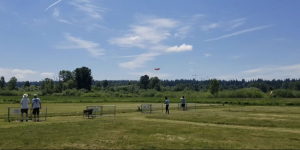
AeroVironment UAV
This team will demonstrate the feasibility of deploying one or more quadcopter aircraft from the payload bay of an RC plane. The quadcopter will then recover from tumble and execute a mission to fly to a GPS located target where it will relay video footage back to a ground station.
Garrett Jordan, Monica Kim, Max McGowan, Icevar Naguleswaran, Devon Smith, Chris Won.
Advisers: Matt Keenon and Kristi Morgansen
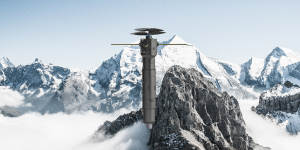
Applewhite Baton
This team will lock down a configuration for the Applewhite Aero Baton Prototype. Applewhite wants to streamline compatibility of their parts. Additionally, they are creating and implementing an interface for autonomous deployment of the Baton (from an air vehicle).
Joseph Bellevue, Jillian Hottelli, Janet Liu, Brian Mach, Haley Stewart, Ethan Uehara
Adviser: Kristi Morgansen
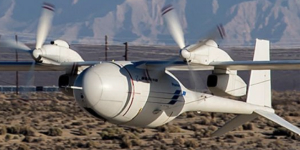
Boeing Disaster Response UAV
This team will design an emergency response, high endurance UAV, carrying a payload that can provide cellular coverage to an operating area in addition to cameras. Some of their requirements include a minimum of 12 hours endurance and a takeoff and land within 1000 feet.
Isaiah Cuadras, Drake King, Jacqueline Marquette, Howard Peng, Sam Reissman, Eric Rubhaka, Quintin Serrano, Victor Via, Jinhee Xu, Mitsuki Yonder
Advisers: Gary Cohen, Eli Levin, and Matthew Orr
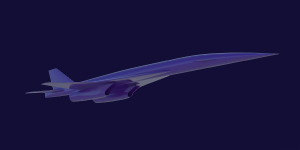
NASA Supersonic Airplane Design (SCALOS)
This team will contribute to a 3-year NASA university-led Commercial Supersonics Technology project by studying and selecting supersonic commercial configurations that demonstrate acceptable low-speed performance and low-sonic boom characteristics. Their goal is to conduct design, analysis, and development of performance and S&C predictions via simulation software to further define the Supersonic Cruise Reference airliner concept for use by the NASA grant SCALOS effort.
Austin Chandra, Brendan Geffe, Nathan Han, Danny Beeson, Colton Hill, Anant Kapur, Shelby Lee, Zhangsheng Lian, Pascal Nagata, Anwar Moustafa, Ignacio Re, Michael Stemen, Vinsensius
Advisers: Eli Livne and Chet Nelson
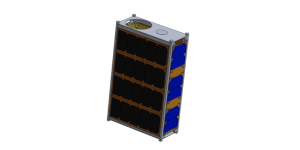
6U Cubesat: Maratus Mission
This team will launch and operation a 6U satellite holding an optical payload designed to measure ambient gases between galaxies. Their goal is to collect data to improve the current computational model of the circumgalactic medium.
Nicholas Chu, Athil George, Thomas Key, Luke Kuklenski, Carie Lai, Jae Lee, Josh MacLurg, Nicholas Sianghio, Nicholas Toyama, Eric Wills
Advisers: Charlie Kelly and Taylor Reynolds
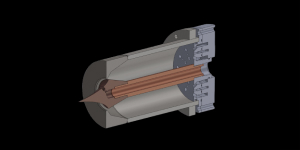
SARP Propulsion: Aerospike Nozzle
This team will develop a subscale rocket engine utilizing an aerospike nozzle geometry with implementation of thrust vector control using fluid injection.
Kristina Dong, Josh Forsythe, Michelle Graebner, Adrian Lo, Jared Smythe, Zach Tom, Oliver Ruo, Chris van den Heuvel, Catherine Wilborn
Advisers: Jim Hermanson and Ms. Nyssa Thompson
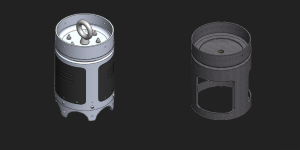
SARP Structures: Composite Recovery Coupler
This team will create a lighter, stronger Recovery Coupler for the current SARP rocket, Pacific Impulse, out of composite material.
Greg Boyce, Zach Gommi, Cat Hannahs, Gabby McDaniel, Toby Moreno
Advisers: Ed Habtour and Kiefer Dundas (Janicki Industries)
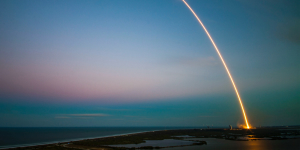
SEDS: RRC Multistage Rocket
This team will design, construct, and fly a 1 kg scientific payload to an altitude of 10K ft on a rocket with the use of only Commercial Off The Shelf (COTS) motors.
Alex Barbera, Bao Truong, Caroline Paxton, Kyle Fisher, Noah Piper, Steven Tu, Taylor Mills, Wenkang Wang
Adviser: Kristi Morgansen
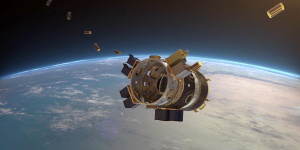
SOC-i Cubesat: GNC Hardware
This team will create a GNC sensor and actuator system. This is done through a GNC operating loop, which runs continuously during flight to control the satellite’s altitude.
Branton Bradford, Ryan Lorette, William Pope, Alex Zhen
Advisers: Charlie Kelly and Taylor Reynolds
- Airbus | Battery Swapping System for Electric Aircraft
- Applewhite Aero | Baton, A Precision Delivery System
- Boeing | 50 & 76 Seat Regional Aircraft Family
- TLG Aerospace | Design for Robust Laminar Flow on High Lift Airfoils
- Vulcan| Improved Conservation UAV
- Boeing | Dedicated Air Freighter Design
- Boeing | Thermoplastic Composite Control Surface Integrated Wing Design/Build
- GKN Aerospace | Next Generation Midsize Airliner Lipskin Design Trade Study
- Latécoère | Aircraft Door Flight Lock
- magniX | The All-Electric Air Tractor
- AeroTEC | Trailing Pressure Measurement System
- AT&T | LTE Antenna for Tethered Drones
- Blue Origin | New Glenn Booster Robotic Approach
- Boeing | Hybrid-Electric STOL Air Taxi Design
- GKN Aerospace | Effect of Embedded Dissimilar Materials on the Fatigue Life of Honeycomb Panels
- GKN Aerospace | Flow Characteristics of Manufacturing Defects on Lip Skins and the Effect on Specific Fuel Consumption
- Sagetech | Angle of Attack Sensor for Small UAS
- Vulcan Technologies | Poacher Discovery and Tracking from an Aerial Vehicle